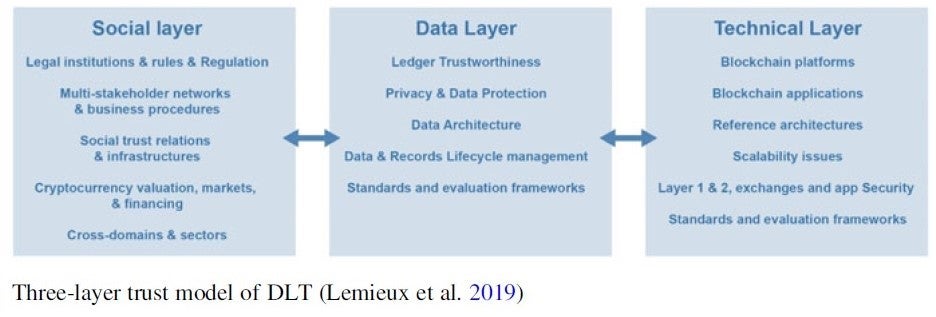 A person with curly hair looks at a large tv screen where data charts and numbers are showing
A person with curly hair looks at a large tv screen where data charts and numbers are showing
Researchers and practitioners have demonstrated that the benefits of blockchain and distributed ledgers aren’t limited to cryptocurrencies such as Bitcoin. The technology, including blockchain, also has the potential to transform government activities by offering new ways of organizing processes and handling information.
Over the past few years, governments in several countries have been experimenting with the application of this novel technology to a wide variety of functions and services, including land registration, educational credentialing, health care, procurement, food supply chains and identity management. But despite blockchain’s potential, experiments and studies suggest it still has a way to go before it can achieve significant government transformation.
Satoshi Nakamoto, the inventor of blockchain technology, didn’t start off by thinking about how the technology could improve transaction or information processing efficiency. Instead, he considered a very human concern: trust. Improving trust is, in fact, blockchain’s superpower and its relative advantage over other tools and technologies used in transaction and information processing. Blockchain’s unique combination of cryptography and distributed networking allows a tamper resistant, append-only and immutable ledger that contains confirmed and validated transactions and provides a foundation for governments, citizens and businesses to trust one another.
In the 1970s, the Nobel prize-winning economist Kenneth Arrow observed that lack of mutual trust represents a distinct loss to economic systems, which require such confidence for the success of collective undertakings. “Virtually every commercial transaction,” he wrote, “has within itself an element of trust, certainly any transaction conducted over a period of time.”
Perceived trustworthiness—the basis of trust, Arrow posits—lowers monitoring and transaction costs. Financial transactions do not occur easily without trust: contract monitoring can be ineffective, sanctioning for contractual breaches can be difficult and transaction costs can increase -- all of which undermine the foundations of financial exchange and production. This explains why implementation of blockchain technology has been found in some cases to not only promote trust but also improve process efficiency: Trust reduces translation costs, making transactions more efficient.
Developing sustainable solutions for the public sector also requires a clear understanding of the blockchain technology stack. Finding a solution must take into account information about the distributed ledger technology protocols (e.g., Ethereum, Hyperledger, Corda, Quorum and others), network options (e.g., public, private, hybrid or consortium), governance mechanisms, security, and cost/duration indications (initial investment and annual operating costs).
Realizing the potential of blockchain technology in public-sector digital transformation requires a framework for technology design and implementation that begins by thinking first about areas where there is a need to improve social trust. Then, officials should consider what information needs to be captured and stored in the blockchain (and, equally, what should not be captured and stored there) to support the goal of trust, followed by consideration of the blockchain protocols, architectures and other technical considerations that deliver the necessary capabilities.
This approach requires a new “Three Layer” design and implementation paradigm comprised of a Social layer (human actors and social aspects such as user incentives and motivations, culture, levels of digital literacy, access to technology, etc.); a Data layer (the ledger itself as an ”immutable” store of transactional data/records, including considerations of data usability, privacy, and security, authenticity, reliability, integrity, etc.); and a Technical layer (the technology stack, including distributed ledger protocols, consensus mechanisms, architectures, peer-to-peer networks, data storage, etc.). Adopting this approach encourages consideration of important design trade-offs among the layers that could help avoid potential misalignments between the technology and its intended area of application, as well as encourage faster adoption and more transformative outcomes for governments.
Source: V. L. Lemieux, C. Feng (eds.), Building Decentralized Trust
https://doi.org/10.1007/978-3-030-54414-0_7 | https://1drv.ms/b/s!ApjREsRt9AFvfl_Pp_cmmvCcXoc
Upcoming event - December 7, 11:00am ET
Deploying Blockchain and Distributed Ledger Technology for Government Digital Transformation: Overcoming Barriers to Adoption




Join the Conversation